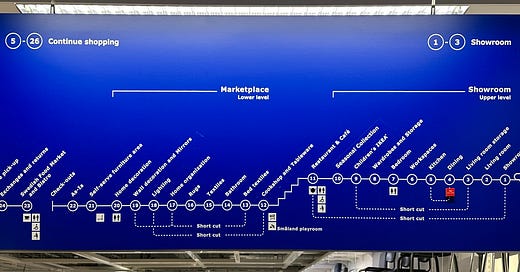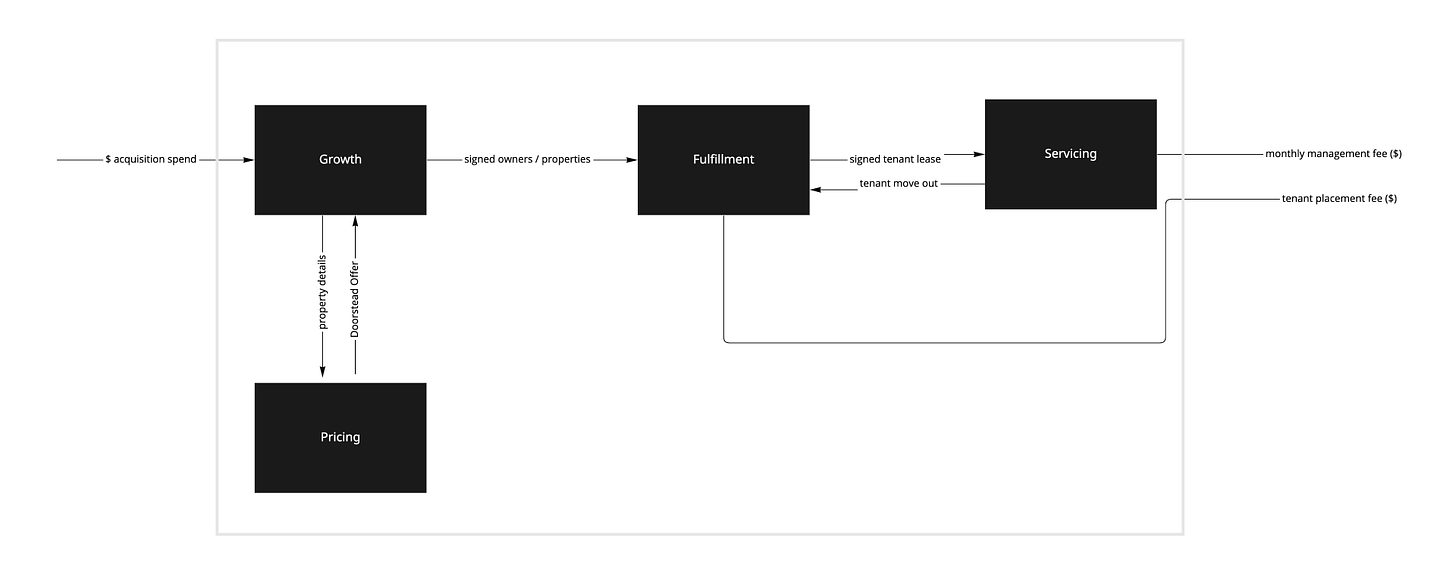Why Leaders Should Start and End With a Map
Lessons I have learned from scaling an organization from an idea to hundreds of people.
One of the benefits of scaling an organization from an idea to hundreds of people is that patterns become evident. It becomes clear why some parts of an organization thrive, and other parts stagnate. There is one thing which stands out to me about the leaders who are able to scale, and it is often integrated into everything that they do. In many cases, this can explain the difference between success and failure in a growing organization.
Successful leaders start and end with a map.
What is a Map
A map is a diagram or visual representation that allows a group of people to build a shared understanding and communicate in concrete terms. Maps can be used to help visualize organizational structures, processes, and other abstract concepts, enabling everyone to understand the same thing, regardless of their background or experience.
Maps have multiple zoom levels, allowing for more detail to be revealed as a person zooms in. At a macro level, they can provide an overview of the entire organization. At a micro level, they can provide detailed information about an individual process or project.
Implicit Leadership
Many leaders do not take the time to create maps for their teams. This results in context being implicitly stored in their heads and transmitted only through conversations. This can be problematic when the team expands, as context can be lost when the leader is not present in discussions and conversations can become siloed.
Without a holistic map, leaders are often stuck playing a game of whack-a-mole. Unintended consequences can arise from trying to fix one issue, only to create another, resulting in an escalation within a different part of the organization (e.g. getting more customer leads with a lower overall sales conversion rate).
Sometimes, this can lead to stress and burnout for leaders since they are unable to keep everyone on the same page in a scalable way. It also becomes difficult for them to take a break because all of the context is in their heads.
Business Systems Maps
There are many types of maps that can be used to align and orient a team, but the systems map is ideal for designing an organization. This type of map allows for abstraction of complexity, since a system can be composed of several intricate systems. This abstraction makes it simpler to align and make decisions, as too many details can often be a source of distraction and confusion for teams.
A map gives the leader a framework for communication, helping to ensure everyone is on the same page while reducing overhead. The map can enable the leader to think strategically about the relationships between different parts of the organization, and also identify bottlenecks easily.
Examples from Early Doorstead
Doorstead’s Satellite View
At Doorstead, we initially broke down our business into three key components: Growth, Fulfillment, and Servicing. Growth was responsible for the first contact with a property all the way through to contract; Fulfillment managed the process for getting a property rent ready and finding a tenant; and Servicing oversaw all activities once we had a signed owner and tenant. This process-oriented approach allowed us to build a scalable operating system with clear interfaces and helped us grow from one to thousands of customers.
Doorstead’s Team View
As our system became more complex, we divided it into subsystems. More concretely, we split the Growth team into the Demand Generation and Sales team. This structure created clear handoffs and guardrails while also maintaining accountability. To maximize capital efficiency, we ran our Demand Generation team as a business unit, which was led by a marketing expert who was responsible for the end-to-end results.
Doorstead’s Street View
Regardless of whether Growth was one person, a team, or a team of teams, we have always believed in having a detailed map. This map contains our step-by-step conversion funnel and is separated by each customer action. It has helped us to understand the bottlenecks in our growth funnel and debug when one of the steps is not working well.
Uncharted Territory
Before finding product-market fit, it can be counter-productive to create too many maps and keep them up-to-date. Personally, I recommended having one map to help organize your intuition and systematically identify what is working and what is not working. In some cases, the map can be used to guide the experimentation process. In other cases, the map may help determine that success is unlikely and inform the decision to pivot.
Iterate with a Map
As we have scaled, we have run into situations where we have broken our flywheel and had to roll back our product launches. This often occurs when we have forgotten to document the current system, the proposed system, and the success metrics. After launching an initiative, it is important to review the success metrics and confirm that the new approach is, in fact, better with data.
Closing
The importance of having a map cannot be overstated. Whether you're starting a business, growing an organization, or looking to improve a process, having a map can be the difference between success and failure. A map provides clarity and context, helps you think strategically, and most importantly, it helps ensure that everyone is on the same page.
This is why I believe the best organizational leaders start and end with a map.









